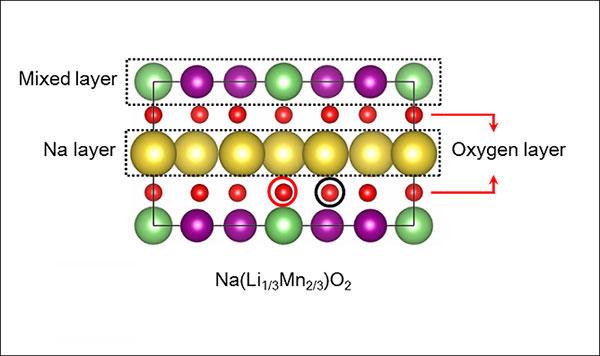
Researchers at the University of Texas at Dallas and Seoul National University have designed a novel battery cathode material that offers a potentially lower-cost, more eco-friendly option to lithium-ion batteries. Their sodium-ion design, which retains the high energy density of a lithium-ion cathode, replaces the most of the lithium atoms (green) with sodium (yellow). The layered structure of the new material also incorporates manganese (purple) and oxygen (red). The research is published in the journal Advanced Materials.